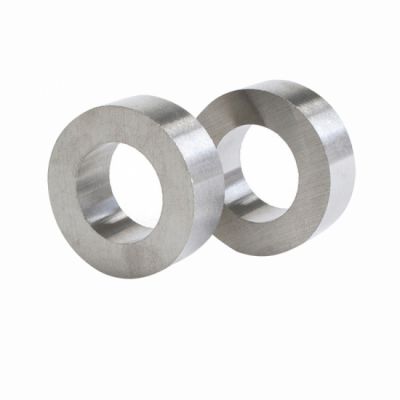- Zhongtang Town, Dongguan City, Guangdong ,China
- [email protected]
- +8619065048753
Gold-plated permanent magnet
- Home
- PRODUCTS
- Neodymium Magnets
- Super strong gold-plated permanent magnet



1. Technical Specifications for Gold-plated permanent magnet:
1.1 (Material Composition):
Base Material: Usually rare earth magnets such as neodymium iron boron (NdFeB) or samarium cobalt (SmCo), which are known for their high magnetic properties.
Surface Treatment: Gold plating. Gold has excellent chemical stability, providing corrosion resistance and electrochemical stability while maintaining a bright appearance.
1.2 (Magnetic Properties):
Residual Induction, Br: Typical values are in the **1.2-1.5 Tesla** range, which means that the magnet can generate a very strong magnetic field.
Coercivity, Hc): About 12-30 kOe, which means that the magnet remains magnetic in a strong external magnetic field.
Maximum Energy Product, BHmax: Typical values are 30-52 MGOe, indicating a very high energy density.
Operating Temperature: Gold-plated NdFeB magnets typically operate in the range of 80°C to 150°C. Samarium Cobalt magnets are more temperature resistant, up to 300°C.
1.3 Dimensions and Shapes:
Common sizes include sheet, ring, cylindrical, cubic, etc., which are customized according to application requirements.
Dimension tolerance: ±0.05 mm, ensuring application in scenarios with high precision requirements.
1.4 Corrosion Resistance:
Metal plating (especially gold) significantly enhances the corrosion resistance of the magnet, preventing oxidation and environmental factors.
2. Applications:
2.1 Electronics and Electrical Applications:
Precision Sensors: Due to the high and stable magnetic field, gold-plated permanent magnets are often used in high-precision sensors, such as accelerometers, magnetoresistive sensors, etc.
Speakers and Headphones: The high magnetic flux density allows it to be used to improve the sound quality of speakers and high-end headphones, especially in designs that require small size and high power.
Micro Motors: In micro motors and stepper motors, super strong magnets can improve efficiency and reduce power loss.
2.2 **Medical Devices:
MRI (Magnetic Resonance Imaging): High-performance magnets are often used to generate strong magnetic fields in magnetic resonance imaging equipment.
Implanted Devices: Due to the biocompatibility of gold, gold-plated magnets are often used in implanted devices in the body, such as control magnets for pacemakers.
2.3 Scientific Research:
Particle Accelerators: These magnets are used to control particle trajectories.
NMR Research: Uses its strong magnetic field to generate a consistent magnetic environment for NMR experiments.
2.4 Aerospace and Defense:
Guidance Systems: Magnets are used in guidance systems for missiles and satellites.
Power Plants: Provides a better power-to-weight ratio in efficient engines.
2.5 Jewelry and Luxury Goods:
-Gold-plated magnets are often used in luxury goods or jewelry decorations, such as the strong magnetic clasps used in high-end watches.
3. Advantages:
High Magnetic Energy Density: Relative to volume, it has a very high magnetic energy density, which can greatly improve the efficiency of the device.
Corrosion Resistance: The gold plating makes it stable in humid environments and prolongs its service life.
Biocompatibility: The gold plating makes gold-plated permanent magnet suitable for use in the biomedical field.
We supply approved neodymium rare earth magnets in a variety of shapes, sizes, premium grades (from N30 to N52) and surface treatments. Our extensive inventory of NdFeB magnets includes discs, blocks, strips, rings, rods and more. Not all of our magnets are displayed on this website. If you can’t find the magnet you need, contact us today and our staff will make sure you find the best magnet for your application.
Subscribe Now
Don’t miss our future updates! Get Subscribed Today!
©2024. Dongguan Pegaint magnet CO.,LTD All Rights Reserved.




